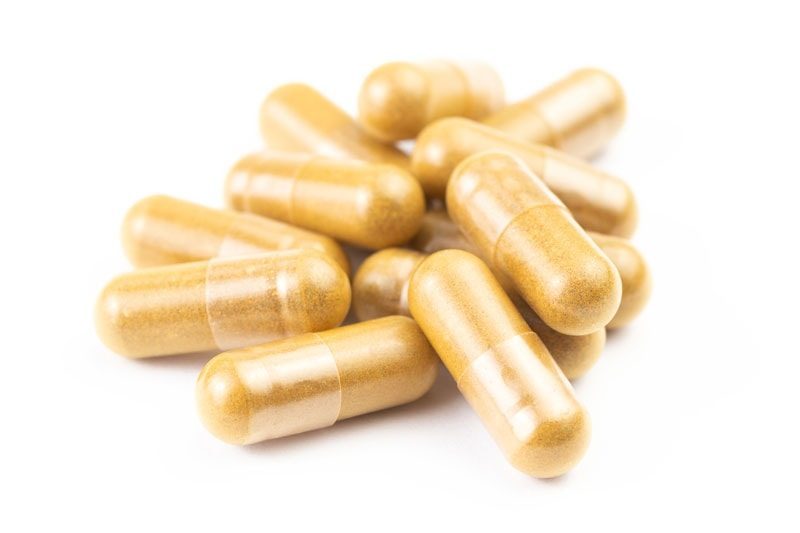The supplement industry is booming, especially when it comes to liquid vitamins. Growing awareness about the importance of nutrition for health and wellness along with the realization that the typical American diet lacks many important nutrients have caused Americans to turn to all kinds of dietary supplements to fulfill their nutritional needs.
That being said, many would agree that consistently taking vitamins or other dietary supplements every day can be quite a challenge. Pill-popping is anything but pleasant, and powders are not for everyone.
Fortunately, in recent years, supplement manufacturers have been working hard to invent new, easier ways for consumers to take their daily multivitamins. Of all the new trends to replace vitamin pills with easier substitutes, liquid vitamins seem to be leading the pack.
According to Transparency Market Research, consumers prefer liquid vitamins because they’re easier to swallow and more easily absorbed by the body. They also tend to be cheaper than traditional capsules and tablets. [1] But that doesn’t mean they don’t also have their fair share of setbacks for both consumers and manufacturers.
In this article, you’ll learn all about liquid vitamins and the liquid supplement market, including the pros and cons for manufacturers and consumers. Whether you’re a supplement brand considering selling liquid supplements or a consumer considering purchasing them, here’s everything you need to know.
Contents
What are liquid vitamins?
Liquid vitamins are simply vitamins (or other dietary supplements) that are produced and sold in liquid form. They are currently one of the most popular types of dietary supplements on the market today and are especially popular amongst children and elderly consumers.
Types of liquid vitamins
Just like there are various types of supplement pills (including capsules, tablets, and softgels), there are also quite a few types of liquid supplements and vitamins available in the marketplace.
Single-dose liquid vitamin tubes or shots
One of the most popular types of liquid vitamins is single-dose liquid vitamin tubes or shots. These vitamins come in small bottles or tubes that can usually be finished in one or two large gulps for the average adult. Single single-dose liquid vitamins are great for both adults and kids and are especially appealing as last-minute impulse items. Consumers are often curious about their taste and effect, and, since they’re only single-dose bottles, there’s very little risk in making the purchase and trying them out.
Multi-dose liquid vitamin bottles
Multi-dose liquid vitamin bottles are larger bottles that contain multiple doses of the liquid supplement. These bottles usually contain instructions regarding daily serving sizes for adults, children, or both. Multi-dose liquid vitamins are great for consumers with certain medical conditions that require them to take certain supplements every single day in order to maintain good health. They’re also more cost-effective than single-dose liquids and are, therefore, better for consumers looking to add vitamins or other liquid supplements to their everyday routines.

Liquid vitamin droppers
Liquid vitamin droppers are another type of common liquid supplement with highly concentrated vitamins. In fact, serving sizes for liquid vitamin droppers is usually just one or two drops daily under the tongue. Vitamin droppers are the preferred choice for mothers and fathers adding dietary supplements to their baby’s diet. They’re also common for sick or elderly individuals who have trouble ingesting other vitamin formats. Liquid droppers are also more common for specific kinds of dietary supplements like herbal extracts.
Growth on the horizon for the liquid supplement market
The liquid supplement market is expecting incredible growth in the years to come. According to Research and Markets, the global liquid nutritional supplement market is expected to reach US$ 32,286.12 million in 2027 from US$ 20,821.15 million in 2018. In other words, the market is estimated to grow with a compound annual growth rate (CAGR) of 5.1% from 2019 to 2027. [2]
Market researchers attribute this growth forecast to a variety of key factors:
-
- The overall growing interest and demand for dietary supplements
- An increase in chronic diseases, such as diabetes, cancer, neurological disorders, and cardiovascular diseases
- The benefits of liquid supplements, especially for people suffering from cancer, unconscious states, paralysis, and other conditions leading to dysfunctions and disabilities
- Growing awareness of liquid vitamins and supplements
- Manufacturing improvements to liquid supplements regarding taste, texture, and administration
- Versatility of liquid supplements as they’re used for skincare products, animal feed, and even as food additives
One of the key factors driving the growth of the liquid vitamin industry is the benefits of liquid vitamins for both consumers and manufacturers, but that doesn’t mean that liquid vitamins are the right choice for everybody. Whether you’re thinking about taking liquid vitamins yourself, or you’re thinking about manufacturing and selling them to your customers, it’s a good idea to learn more about both the advantages and disadvantages of liquid vitamins.
The advantages of liquid vitamins
1. Easier to swallow
One of the most obvious benefits of liquid vitamins is that liquids are usually easier to swallow than capsules and tablets. This makes liquid vitamins appealing to a large percentage of the population, including kids under 12 years old, seniors older than 65, people with certain medical conditions that make swallowing difficult, and people that suffer from pill anxiety.
- More than 25% of kids have difficulty swallowing medication. [3]
- Between 10 and 40% of the adult population has difficulty swallowing pills. [4]
- About 20% of aged care residents reportedly skip medications because of their inability to swallow them. [5]
Liquid vitamins provide a clear solution for all of the demographics listed above.
2. More easily absorbed
Liquid supplements are also more easily absorbed by the body and, therefore, more effective. When you swallow a tablet, your body has to break apart or dissolve the tablet to get to the micronutrients inside. The same is true for capsules. When you swallow a capsule, your body has to break down the outer shell of the capsule before it can access its nutrients.
Unfortunately, if this process is too slow, and it takes your body too long to break down the tablets or capsules, the nutrients will pass right through your digestive tract with little to no absorption. Liquid vitamins propose a solution to this problem. With liquid supplements, the nutrients are accessed and absorbed almost immediately, which means your body can take advantage of the full dosage of vitamins and minerals.

3. Fewer mystery ingredients
Many tablets have a long list of ingredients known as bonding agents as well as ingredients to improve their shelf-life. Unfortunately, these ingredients can come with some seriously consequential side-effects. Here are just a few of the mystery ingredients found in many tablets:
- Hydrogenated oils, used to increase shelf-life, can increase LDL “bad” cholesterol and decrease HDL “good” cholesterol and can also cause inflammation.
- Sodium Benzoate, used to keep tablets fresh and extend shelf-life, has been linked to DNA damage, liver cell damage, hyperactivity, and several types of cancer. [6]
- Magnesium stearate and magnesium silicate, used to keep ingredients from clumping, may cause cellular inflammation. [7]
Liquid vitamins usually expire more quickly, but usually don’t contain as many of the mystery ingredients listed above as tablets do. If you’re worried about what’s in your vitamins, liquid vitamins may be a better option.
4. Easier dose modifications
Many families and friends like to share their supplements, but the dosage isn’t always the same amongst family members or friends. While full-grown adults could require 600 milligrams of a supplement, kids might only require 200 milligrams. That means, a 600-milligram tablet would need to be cut into thirds, or the adult would need to take 3 pills.
Both cutting a tablet and taking extra pills is a hassle. Not to mention, with capsules, dose modification is impossible, considering the fact that you’d have to break apart the capsule (and tamper with absorption rates). Liquid vitamins, on the other hand, make it easy to modify dosage. Just pour a little more, or pour a little less.
5. Better synergism
Synergy refers to the combination of two or more supplements to produce a greater effect than when taken alone. The fact of the matter is, certain vitamins and minerals work better when combined. Vitamins K and D, for example, are more effective for bone and joint health when combined than when taken alone. [8]
Liquid vitamins are able to achieve high levels of nutrient density that are not achievable with capsules or tablets. That means, with a liquid formula, you can add higher doses of synergetic micronutrients to amplify the health-boosting benefits of the supplements.
Simply put, with liquid vitamins, the effect of each nutrient is much more significant and, therefore, produces better results.
The disadvantages of liquid vitamins
1. Bad taste and smell
One of the biggest disadvantages of liquid vitamins is that it’s very difficult to create a liquid vitamin that tastes great. Every supplement contains active ingredients that are considered to be its base. The taste of this base can best be described as “tasting like medicine,” and it’s difficult for supplement manufacturers to appropriately mask that flavor and create a great-tasting liquid vitamin. That being said, with the right formula, a great-tasting liquid vitamin isn’t out of the question.
2. Liquid is bad for certain ingredients
Some ingredients are less stable in a liquid environment, making them less effective over time. This is especially true for vitamins such as vitamin C and folic acid. If you’re thinking about manufacturing liquid vitamins, make sure that the ingredients you choose are stable in a liquid environment.
Additionally, some ingredients, like melatonin, are meant to be released over a period of time. It’s difficult to manufacture liquid vitamins with slow-releasing ingredients.
3. Dosing problems
It’s easy to modify the dosage of liquid vitamins, which means it’s also easy for consumers to take too much or too little. In the best-case scenarios, taking too much or too little could mean overspending or a lack of results. In the worst-case scenarios, taking too much or too little could be the difference between life and death. When highly accurate dosing is extremely important, it’s best to stick to pre-dosed capsules and tablets.
Interested in manufacturing liquid vitamins?
The liquid supplement market is booming, and the trend isn’t slowing down. Consumers want more liquid vitamins. That being said, it takes a lot of expertise to understand which ingredients work well for liquids, how to combine them, and how to create a great-tasting liquid supplement.
If you’re interested in adding liquid vitamins to your supplement brand, you’ll want to choose a supplement manufacturer with both expertise and experience manufacturing liquid vitamins.
Generation Nutra can help you formulate the perfect liquid vitamin for your customers and offer you so much more. Here are some extra benefits you get when you choose Generation Nutra as your liquid supplement manufacturer:
- Thousands of raw materials to choose from so you can create unique and personalized formulas.
- Advice in terms of formulation.
- Various supplement packaging formats to choose from so you can customize your product.
- A team of in-house graphic designers to help you with supplement label design.
- Advice and guidance to help you market and sell your product.
Are you looking for a supplement manufacturer?
Ask Generation Nutra what we can do for you.
References
- https://www.transparencymarketresearch.com/liquid-vitamins-market.html
- https://www.globenewswire.com/news-release/2020/05/01/2025990/0/en/Global-Liquid-Nutritional-Supplement-Market-2018-to-2027-by-Product-Ingredient-Age-Group-Route-of-Administration-Distribution-Channel-and-Geography.html
- https://www.ncbi.nlm.nih.gov/pmc/articles/PMC4184198/
- https://www.ncbi.nlm.nih.gov/pmc/articles/PMC6065591/
- https://www.ncbi.nlm.nih.gov/pmc/articles/PMC6065591/
- https://www.tandfonline.com/doi/full/10.1080/13102818.2016.1224979
- https://www.thehealthcloud.co.uk/magnesium-stearate-silica-safe/
- https://www.ncbi.nlm.nih.gov/pmc/articles/PMC5613455/










